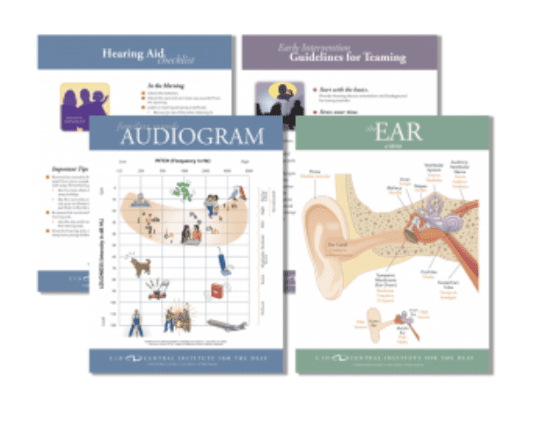Are you looking for a versatile and effective way to introduce a new topic within your classroom? My favorite way to introduce lessons is with an anchor chart. An anchor chart is a visual learning tool that highlights important concepts and strategies for a lesson. They have been around for quite some time and are highly popular in the teaching world. Anchor charts are extremely supportive and motivating for all types of learners.
As a teacher of the deaf who uses a Listening and Spoken Language (LSL) approach with my students, anchor charts help me check all the boxes to address the multiple needs of my students. Creating an anchor chart is simple. You will want to keep these four key steps in mind.
- Search: When it comes to anchor charts, Pinterest is your friend! There are examples of anchor charts for almost any topic you are looking for. Do yourself a favor and start there.
- Adapt: Once I have decided on the overall outline of my anchor chart, I then adapt it to fit the content area and/or specific language target I am going to teach.
- Modify: Next, and most importantly, I determine how I am going to modify the information on my anchor chart to meet the needs of my students. This includes what pictures I will use, language structures/targets to use, changing the vocabulary, etc.
- Display: Lastly, hang it up! The main purpose of an anchor chart is for it to be displayed so your students can use it as a visual resource while learning in their classroom.
Some of the most important areas to focus on when teaching children who are deaf and hard of hearing are language, vocabulary, speech and auditory skills. Additionally, some of the best teaching techniques for a LSL teacher of the deaf include using visuals, hands on experiences, structured language activities, multiple repetitions and comprehension checks. I have listed below how anchor charts specifically help me incorporate these important aspects into my lessons.
Vocabulary – Students who are deaf and hard of hearing learn vocabulary through multiple days of repetition and practice. Using an anchor chart to teach vocabulary provides my students with consistent wording for concepts or definitions being taught, while also supporting their expressive language skills to talk about what they have learned with accuracy.
Visuals – Students with hearing loss strongly benefit from the use of pictures when learning new information. Visuals serve as a major support to help our population of students increase their receptive vocabulary skills and retain previously taught concepts. Students may use an anchor chart duringindependent work time as a memory resource to help them recall or categorize information just by looking at the area where the chart was displayed, even after it has been removed.
Hands On – Lessons for students who are deaf and hard of hearing are enhanced by use of hands on activities. Creating an anchor chart together is a perfect way to give my students an interactive experience while learning new information. The students love adding their own touches when contributing to their learning.
Language Structures – Students with hearing loss learn best when language structures are explicitly taught and practiced in a variety of ways. Using an anchor chart as an additional activity to practice a targeted language structure helps my students practice the target receptively, expressively and in written form.
Below are some anchor charts that I have used for teaching language structures (A), concepts (B), providing examples for vocabulary words (C) and the definition of a new vocabulary word (D).


Meghan Schuler is a teacher of the deaf in the Virginia J. Browning Primary School at CID – Central Institute for the Deaf. She received her master’s degree in Early Intervention in Deaf Education from Fontbonne University. She currently holds professional certification from the national Council of Education of the Deaf, as well as a teaching certification in the area of Deaf and Hearing Impaired.












